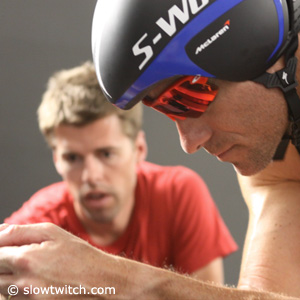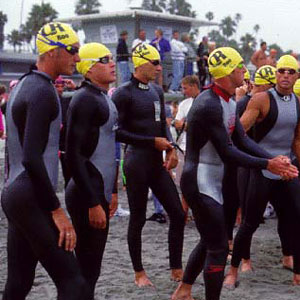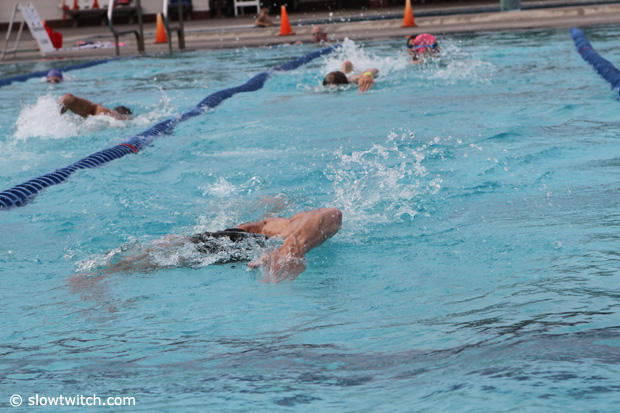The High Cost of Good Form

This article was originally published by Dan Empfield on 9.23.04 and we thought it was worth another look.
The irony is not readily apparent. Some of the world's truly economical phenomena require a tremendous expenditure of energy and power in order to function properly.
Consider Boeing's in-development Sonic Cruiser. Its twin Pratt & Whitney 4098 engines, the same as power a 777, each develop 98,000 pounds of thrust. The Sonic Cruiser will deliver passengers to their destinations at a lower fuel cost per seat. But, the engines will burn fuel at a faster rate than when they’re mounted on a 777. In order for the economy to be realized, the plane must get to its destination faster, completing more routes each day. It will cruise at 725 miles per hour, 15 to 20-percent faster than any commercial airliner flying today.
Consider a much smaller denizen of the air. Wandering albatrosses spend 90 percent of their lives aloft, and may not touch dry land for nine months at a time. They sleep in the air. Their ten to twelve-foot wingspans allow for such economy. Not, however, without considerable strength required to gain flight.
In other words, there may be costs associated with high performance. No one would question that a Sonic Cruiser operates at the peak of efficiency, but not without its Pratt & Whitney engines burning fuel up to 20% faster than when mounted on other planes. Put an underpowered set of engines on this plane and it'll stall, and come crashing to earth. Power the Sonic Cruiser with enough muscle and it'll outperform any commercial airliner.
Humans are saddled with the engines with which they've been born. Sort of. We can turn our 170-horse slant-sixes into 300 horsepower V8s, but not without a lot of blood, sweat and tears. The difficulty in teaching proper swim and run technique to a triathlete is that he's not yet got a big enough engine to pull "good form" off. We're presented with the chick-and-egg dilemma. Do you teach good technique, even though a newbie triathlete can’t sustain it with the engine he’s got? What’s better? Allowing a neophyte swimmer to do more yardage with bad technique? To swim until he can't hold his technique, even if he can’t hold his good form for very long? Or to swim with good technique slowly, to gain more distance before losing form?
The first element to answering this question is in understanding that good technique does not come free. It has a cost associated with it. There are three things you need in order to utilize proper technique and, in truth, "proper technique" is sometimes variable. There are elements of technique that are appropriately matched with various abilities and effort levels. Consider cycling cadence. Cycling requires an element of neuromuscular ability, and also a capacity for aerobic performance. The harder you work, the faster your cadence ought to be, in order to minimize neuromuscular fatigue. The lower your output, the less you'll want to fatigue your aerobic system. This explains in part why those in an under-1-hour time trial will pedal between 90rpm and 105rpm, while RAAM riders will spend a lot of time riding between 60rpm and 70rpm.
This is great theory to know. It's hard to practice. Through training you generate muscles that overcome tremendous obstacles. In order to preserve the ability of these muscles to work over time you increase your cadence (not, however, in swimming—that's a special case we’ll consider later). All this assumes, however, that a fairly high power output is contemplated. Increasing your cadence comes at an aerobic cost. When you’re untrained, you can't exercise at a high level. Therefore, increasing your cadence—one element in optimizing your technique—only has cost associated with it (there is no initial obvious benefit realized from increasing one's cadence). In other words, the novice realizes no benefit to training with "proper" technique, because this technique is only proper for a power output he can't yet sustain. What's the use of teaching an albatross how to fly properly if he hasn't yet grown wings strong enough to get him aloft? And why will he want to practice flapping these appendages when it's simpler and easier to just waddle along the ground?
So, back to the question. Do you swim only what you can while holding good form? Or do you swim the prescribed yardage, even if your technique falters? Any triathlete, and any triathlon coach, and any single sport coach, has experienced these quandaries, and heard the accompanying questions from his or her disciples. The answer in practice is, you do everything. You swim with proper technique. And you swim the prescribed yardage, even if you can't do it with proper technique. And you swim it as fast as you conceivably can. You do all this even if you can't really do any of it perfectly. Eventually things work themselves out.
Swimming or running with proper technique requires a variety of skills and abilities. First, you've got to know what proper technique looks like. In running, it might consist of a footfall occurring with the ball of the foot landing just below the front of the knee, and an arm swing during which one's hands don’t cross the center line of the body. In swimming it might mean forearm flexion occurring prior to any movement of the upper arm. In other words, the catch, the glide, forearm flexion, all occurring with a motionless elbow —the upper arm is parallel to the surface of the water until the pulling surface is set.
These are elements of running and swimming that are universal to good athletes. But they presume a high work output, that is, in the same way the Boeing Sonic Cruiser isn’t made to fly below stall speed, these sorts of technical elements aren't designed to help you run 8 minutes per mile or swim 1500 meters in 28 minutes. These are elements of technique exhibited by those who approach supersonic speeds. Teaching someone to swim properly is a bit like teaching the pole vault. You've got to be reasonably strong in order to do it right. Fortunately, you don't have to be quite that strong to swim correctly—but, it makes it a lot easier if you've got a bit of strength.
To use proper technique, then, you have to know what proper technique is. You might say that one cost is mental, and concentrational. But there's more. You've got to teach your body to do what your brain tells it. And, you've got to then teach your body to perform proper technique as second nature. After swimming or running for enough years, proper form becomes the default technique. You don’t have to concentrate. You don’t have to think about it. You just do it. You'll hear this process described as "fusing neural pathways," or "motor learning."
These costs I've so far described are paid by investments in time and concentration, not in sweat. But you have to pay that cost as well. Good form assumes a level of general muscular strength and general fitness. More than that, it requires very sport specific strength and fitness. Take swimming's "high elbow" described above. I've yet to find a named exercise in the gym that prepares one for that motion (though I've developed my own unnamed one). By far the best strength-building exercise for high-elbow swimming is high-elbow swimming.
So, where are we? We've established that it’s hard to swim or run slow with a technique necessary to swim or run fast. This is why developing swimmers and runners don't easily adapt to using proper form—because proper form isn’t yet proper for the speed at which slower athletes travel. "Proper" form is only proper for the speed to which they aspire, not for the speed they're currently at. So, slower swimmers and runners have to take it on faith that the technique necessary for a better performance is necessary to learn and practice even before it can be used successfully.
But it's not true in the other direction. The truly accomplished swimmer or runner is one who can ply his or her avocation with finely developed technique at any speed. In other words, you don’t see a good swimmer reverting to "slow swim" form when swimming slowly. Once you learn form associated with fast swimming, and complete the necessary physical adaptations, you’ll always use that form. Likewise, you’ll notice accomplished runners using their good form even when warming up and down.
Your bad technique may be well suited to your slow speed. But it's only going to get you so far, so fast. If you want to make that quantum leap in performance, you'll have to make the appropriate changes in technique, even if such technical changes are awkward and painful to initially incorporate.







Start the discussion at forum.slowtwitch.com